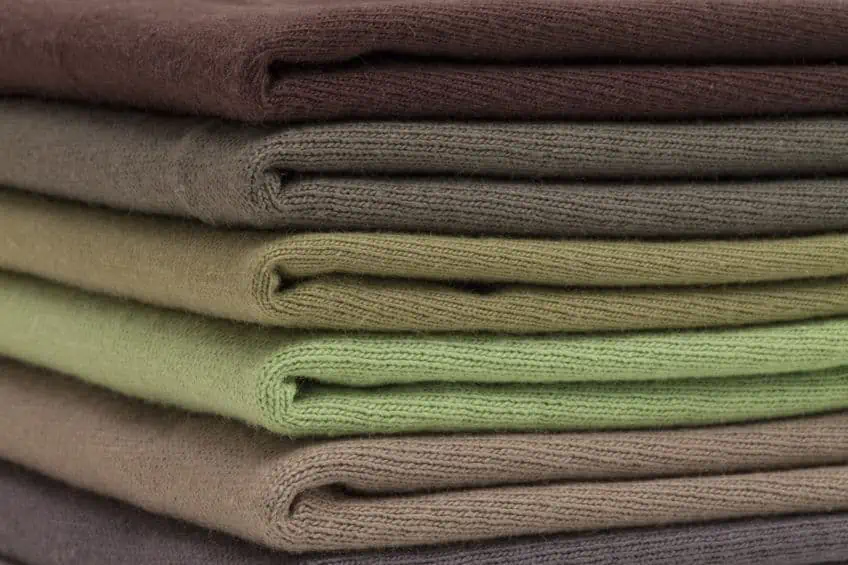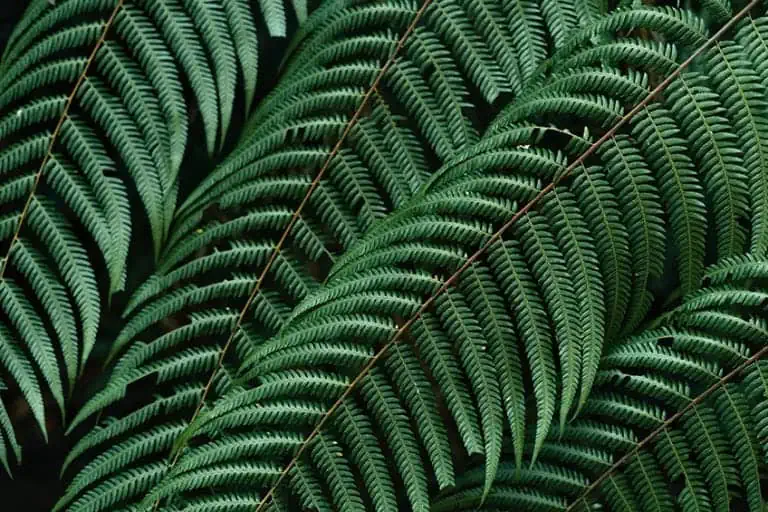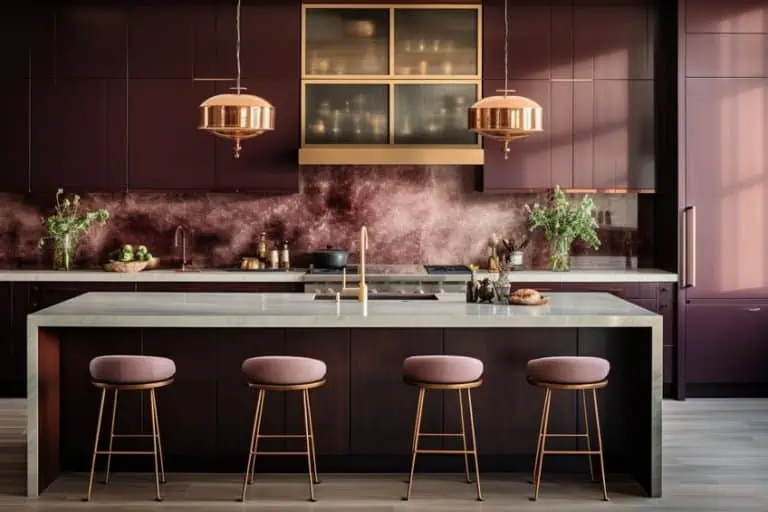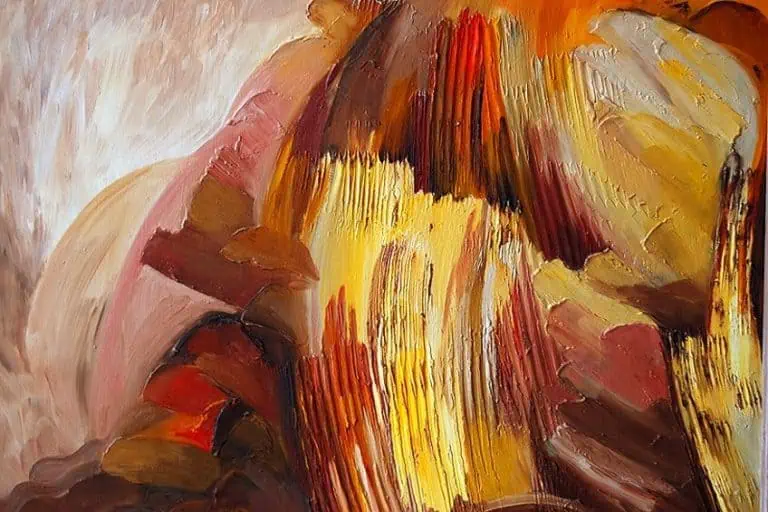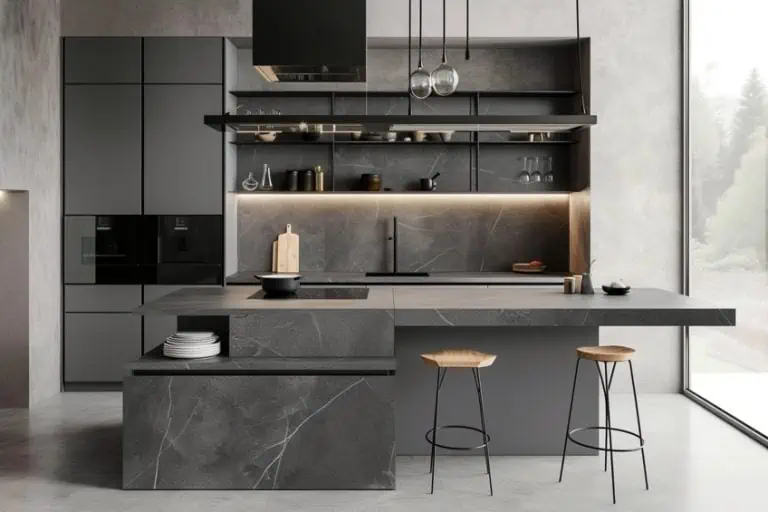Earth-Tone Color Palette – How to Use Earthy Colors in Art
This post may contain affiliate links. We may earn a small commission from purchases made through them, at no additional cost to you.
Color is the most impactful part of your home. The mood and atmosphere of a room can be transformed merely by changing the colors you use in it, so choosing the right color scheme can seem like a daunting task. Using earth tones in your home can give you the flexibility to easily achieve a relaxing, muted color scheme or a bold, energizing room that everyone will love.
Table of Contents
What Are Earth Colors?
Earth-tone color palettes have been given an unfair reputation for being drab, uninteresting, and monotonous, however, when they are done well, these palettes can have fantastic contrast and visual interest. Many think that brown or beige are the only colors in earth-tone palettes but they are actually made up of a multitude of rich hues. These color palettes also include all the various tints, tones, and shades of these colors and are accented with complementary colors and neutrals.

Traditionally, earth colors encompass browns and tans that resemble soil or tree bark. This includes colors such as khaki, wheat, espresso, beige, mushroom, auburn, caramel, and chocolate. Earth tones are much more versatile, however, and also contain colors commonly found in nature for instance greens such as sage or leaf greens; oranges such as rust, burnt sienna, and terracotta; blues such as navy or sky blue; and yellows such as mustard, honey, or turmeric and many more. Most of these colors have brown undertones or are very desaturated, which is why an earth-tone color scheme will hardly use bright violet or red hues.
| Color Name | Color Hex Code | RGB Color Code | CMYK Color Code (%) | Color Shade |
| Khaki | #C3B091 | 195, 176, 145 | 0, 10, 26, 24 | |
| Wheat | #F5DEB3 | 245, 222, 179 | 0, 9, 27, 4 | |
| Espresso | #231814 | 35, 24, 20 | 0, 31, 43, 86 | |
| Beige | #F2E3CE | 242, 227, 206 | 0, 6, 15, 5 | |
| Mushroom | #C4B39B | 196, 179, 155 | 0, 9, 21, 23 | |
| Auburn | #A15843 | 161, 88, 67 | 0, 45, 58, 37 | |
| Caramel | #C5733D | 197, 115, 61 | 0, 42, 69, 23 | |
| Chocolate | #2E1503 | 46, 21, 3 | 0, 54, 93, 82 | |
| Sage | #959B76 | 149, 155, 118 | 4, 0, 24, 39 | |
| Rust | #B7410E | 183, 65, 14 | 0, 64, 92, 28 | |
| Burnt Sienna | #AF480A | 175, 72, 10 | 0, 59, 94, 31 | |
| Terracotta | #C45824 | 196, 88, 36 | 0, 55, 82, 23 | |
| Navy Blue | #151E2E | 21, 30, 46 | 54, 35, 0, 82 | |
| Sky Blue | #87CEEB | 135, 206, 235 | 43, 12, 0, 8 | |
| Mustard | #D5B740 | 213, 183, 64 | 0, 14, 70, 16 | |
| Honey | #EBAF4C | 235, 175, 76 | 235, 175, 76 | |
| Turmeric | #FF850F | 255, 133, 15 | 0, 48, 94, 0 |
How Are Earth Colors Mixed?
Almost all earth colors are a variety of brown or brown undertones, so understanding how brown is created is important when learning how to mix earth tones. Earthy colors tend to be more muted because all three primary colors are used to make them, which lowers their saturation.
To mix yourself a dark brown, begin with a blue and then add orange in small amounts.
You can then use white to make a lighter brown tint of this color or deepen it further with a dark blue. Ensure that you add the blue slowly as too much blue will quickly turn your brown gray. The exact brown you get will depend on the blue and orange you used to mix it, so it is useful to keep a list of the names and proportions of the paint used to create your brown alongside a swatch of it so that you can recreate it later. We have included a well-known color combination to mix brown in the table below.
| Color Name | Color Hex Code | RGB Color Code | CMYK Color Code (%) | Color Shade |
| Cobalt Blue | #0047AB | 0, 71, 171 | 100, 58, 0, 33 | |
| Cadmium Orange | #F28C28 | 242, 140, 40 | 30, 83, 95 |
White is a neutral color that can be used to lighten and create tints of other colors. Black and gray are also neutral colors. Black can be used to darken colors and create shades of different hues. Adding gray to a color lowers its saturation or color purity, making it appear less vibrant and creating a tone of that color.
The basic gray hue is made by mixing black and white, however, gray can also be made by combining all the primary colors together, like when you create browns. This is why some gray hues can appear brown under different lighting or when used alongside other colors such as a deep blue. This makes them highly versatile but learning which colors go together can take some experimentation.
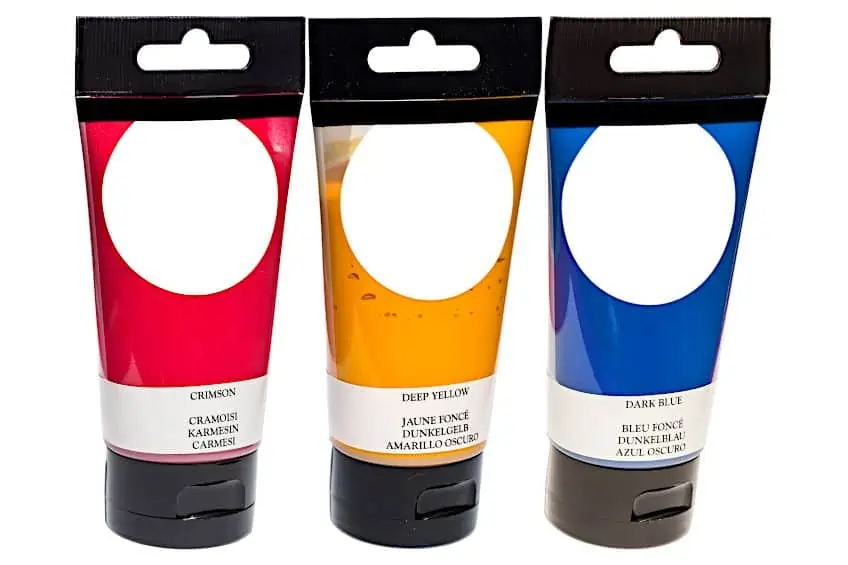
Below is a table with some colors that, when mixed together equally, create a light gray. All these neutrals can be used to change not only your basic brown hue but also other earth colors, into a color that is perfect to use in your home.
| Color Name | Color Hex Code | RGB Color Code | CMYK Color Code (%) | Color Shade |
| Alizarin Crimson | #E32636 | 227, 38, 54 | 0, 83, 76, 11 | |
| French Ultramarine | #2522CA | 37, 34, 202 | 82, 83, 0, 21 | |
| Yellow Ocher | #CC7722 | 204, 119, 34 | 0, 42, 83, 20 |
Warm and Cool Earth Colors
Color temperature can also change the final look of your earth tones. Warm colors usually include red, yellow, and orange, whilst blue, green, and purple are all considered cool colors. Colors can also be considered relatively warm or cold when compared to any other colors that surround them.
Even though green is a cool color, it can appear warmer when used with blue hues. Olive green has a color bias toward yellow, which means that it contains more yellow than blue, and so is considered a warm green compared to greens that tend more towards blue. Olive green, however, remains relatively cool when used alongside yellows, even cooler ones. The color temperature of your final brown color, as well as any other earth tones, will change based on the temperatures and proportions of the colors that were used to make it.
To create a brown that is rich and not muddy, it is good practice to use colors that tend towards each other or have the same color temperature. If you are looking to create a cool brown, then try adding a cooler orange to your blue. If you prefer a warmer brown, then use a more reddish-orange.
| Color Name | Color Hex Code | RGB Color Code | CMYK Color Code (%) | Color Shade |
| Azure | #1520A6 | 21, 32, 166 | 87, 81, 0, 35 | |
| Green | #3BB143 | 59, 177, 67 | 67, 0, 62, 31 | |
| Olive Green | #ACBA6C | 172, 186, 108 | 8, 0, 42, 27 | |
| Cool Yellow | #F2DC6D | 242, 220, 109 | 0, 9, 55, 5 |
Understanding Color Codes
Using color codes, you can see the proportions of colors used to mix that specific hue. They also make it easier to identify the temperature of color and to copy any color exactly from one place to another. The most commonly used color codes are Hex, RGB, and CMYK color codes, with each indicating the amount of each color used to make the hue. In the Hex and RGB color models, colors are made by combining red, green, and blue, whereas in the CMYK color model, colors are the product of combining cyan, magenta, and yellow.
For example, one of the light grays used in our basic earth-tone color palette has a hex code of #B8B8B8. This shows that equal parts of red, green, and blue were used to make this gray, and because of this, it has a relatively neutral color temperature.
| Color Name | Color Hex Code | RGB Color Code | CMYK Color Code (%) | Color Shade |
| Light Gray | #B8B8B8 | 184, 184, 184 | 0, 0, 0, 28 |

The Psychology and Meaning of Earth Tones
Color holds many meanings and significance and, because of this, is known to affect your mood and how you feel about a space. All earth-toned colors produce a friendly and inviting feeling in your home and the many varieties of earth tones all have their own different meanings which can affect your mood in different ways. Earth tones are inspired by nature, with cool earth tones being reminiscent of sandy beaches and warm earth tones bringing to mind endless deserts and fall leaves. Light blues create a gentle and tranquil space and are associated with feelings of dependability and trustworthiness. Terracotta gives a sense of warmth and joyfulness which uplifts and adds comfort to any room
Earth colors bring the outdoors in to create a calm and grounded feel in your space. Because of this, using earthy colors in your home has been promoted to boost mental well-being and reduce stress.
Different Earth-Tone Color Schemes
Color palettes are a collection of colors that, when used together, produce a feeling of balance while remaining visually interesting. Color palettes are created using various different methods; however, the most popular approaches are complementary, analogous, and monochromatic color schemes. Complementary color schemes combine two hues that lie opposite each other on the color wheel model and produce color palettes with high contrast and a lot of visual interest. On the other end, analogous color schemes use three to four hues that lie alongside each other on the color wheel and create color palettes with a softer contrast.

The triadic color scheme uses three equally spaced colors on the color wheel. Like the complementary color scheme, this bold color scheme creates a high contrast, and is, it is much easier to balance. The monochromatic color scheme uses a single hue as well as the many tones, shades, and tints of that hue, to create a harmonious color palette with subtle contrast. This color scheme can be very difficult to balance as too little contrast will make it feel dull and flat, however, adding neutrals can provide more visual interest. We have used some of these color schemes to create our own earth-tone color palettes to inspire you. The key to using all these earth-tone color palettes is to pick one or two main hues and then use the remaining colors as accent colors.
Basic Earth-Tone Color Palette
This basic color palette uses various tones, tints, and shades of warm brown, along with neutral gray and ivory to create a monochromatic color scheme. The cooler ivory provides good contrast while also balancing the color temperature. To use these earth tones in your home start with light gray or ivory base, either painting the walls or including big furniture such as a couch, and then accent your room with throws or pillows in darker colors.
This color scheme is great to use alongside more rustic décor or in rooms that already have dark wooden fixtures.
| Color Name | Color Hex Code | RGB Color Code | CMYK Color Code (%) | Color Shade |
| Rust Black | #2F2622 | 47, 38, 34 | 0, 19, 28, 82 | |
| Dark Walnut | #693C26 | 105, 60, 38 | 0, 43, 64, 59 | |
| Spice Brown | #8F6242 | 143, 98, 66 | 0, 31, 54, 44 | |
| Ivory Brown | #B09B8C | 176, 155, 140 | 0, 12, 20, 31 | |
| Light Gray | #B8B8B8 | 184, 184, 184 | 0, 0, 0, 28 |
Dark Earth-Tone Color Palette
This color palette uses charcoal and espresso earth tones and creates a modern and dramatic feel when used in your home. Duck egg blue is a complimentary color to the orange undertones in all the other hues so should be used as an accent color to create contrast and balance. This broody color scheme is perfect for larger rooms that receive a lot of natural light.
| Color Name | Color Hex Code | RGB Color Code | CMYK Color Code (%) | Color Shade |
| Charcoal | #414141 | 65, 65, 65 | 0, 0, 0, 75 | |
| Espresso | #231814 | 35, 24, 20 | 0, 31, 43, 86 | |
| Tan Pink | #F7A086 | 247, 160, 134 | 0, 35, 46, 3 | |
| White Oak | #DCD7C9 | 220, 215, 201 | 0, 2, 9, 14 | |
| Duck Egg Blue | #CCDFE8 | 204, 223, 232 | 12, 4, 0, 9 |

Muted Earth-Tone Color Palette
If you are looking for a more understated earth-tone color scheme, then using muted earth tones is great. This color palette uses dusky pink, latte, and a blue olive to create a triadic color scheme that is soft and balanced but retains good contrast and visual interest. This relaxing look is great for the bedroom and pairs well with bronze or iron fixtures and dark wood.
If you are looking for a bolder look for an office or living space, you can also incorporate a few accents in dark sienna.
| Color Name | Color Hex Code | RGB Color Code | CMYK Color Code (%) | Color Shade |
| Dark Sienna | #3C1414 | 60, 20, 20 | 0, 67, 67, 76 | |
| Dusky Pink | #EDBBBB | 237, 187, 187 | 0, 21, 21, 7 | |
| Latte | #BDAB98 | 198, 171, 152 | 0, 10, 20, 26 | |
| Cream | #F2E9C7 | 242, 233, 199 | 0, 4, 18, 5 | |
| Blue Olive | #5D735D | 93, 115, 93 | 19, 0, 19, 55 |
Warm Earth-Tone Color Palette
The inviting feel that earth tones give makes them great for use in living spaces and kitchens. Warm color palettes are also known to stimulate conversation and appetites so using a warm earth-tone palette is perfect for those who like entertaining. This analogous color scheme uses terracotta and mustard as well as a warm olive with yellow undertones. If you are looking to add more contrast, adding accents of navy blue will make the orange and yellow hues appear more vivid whilst also balancing the palette’s color temperature. Using beige as a neutral in this color palette will give your space a more dramatic feel whereas using white will make your room feel lighter and more open.
| Color Name | Color Hex Code | RGB Color Code | CMYK Color Code (%) | Color Shade |
| Terracotta | #C45824 | 196, 88, 36 | 0, 55, 82, 23 | |
| Olive | #A09F57 | 160, 159, 87 | 0, 1, 46, 37 | |
| Mustard | #D5B740 | 213, 183, 64 | 0, 14, 70, 16 | |
| Beige | #F2E3CE | 242, 227, 206 | 0, 6, 15, 5 | |
| Navy Blue | #151E2E | 21, 30, 46 | 54, 35, 0, 82 |

Cool Earth-Tone Color Palette
Cool earth-tone palettes can also be great to use in your home. These palettes have a calming effect and are perfect to use alongside coastal or beach-house designs. These colors give rooms with light woods an airy feel that encourages relaxation. Our color palette uses blue, purple, and ashy tones to create a light analogous color scheme.
This color scheme is also very flexible, and you could easily replace the blue hues with similar green or purple hues if you prefer these colors.
| Color Name | Color Hex Code | RGB Color Code | CMYK Color Code (%) | Color Shade |
| Navy Blue | #151E2E | 21, 30, 46 | 54, 35, 0, 82 | |
| Dark Royal Blue | #021945 | 2, 25, 46 | 97, 64, 0, 73 | |
| Rose Taupe | #905D5D | 144, 93, 93 | 0, 35, 35, 44 | |
| Lavender | #DFC8E4 | 223, 200, 228 | 2, 12, 0, 11 | |
| Beige | #F2E3CE | 242, 227, 206 | 0, 6, 15, 5 |
Earth Tones in Your Home
Earth tones are a wonderful addition to both the interior and exterior of your home. You can use earth tones with any décor style – from industrial to modern – to balance, subdue, or warm a room. You do not need to paint whole rooms or buy new furniture to incorporate earth tones into your space. Earth colors are very flexible and can be used in your space as both base colors covering an entire wall, or accent colors on a throw pillow. To prevent your room from feeling flat, use a variety of mediums for added texture and dimension.
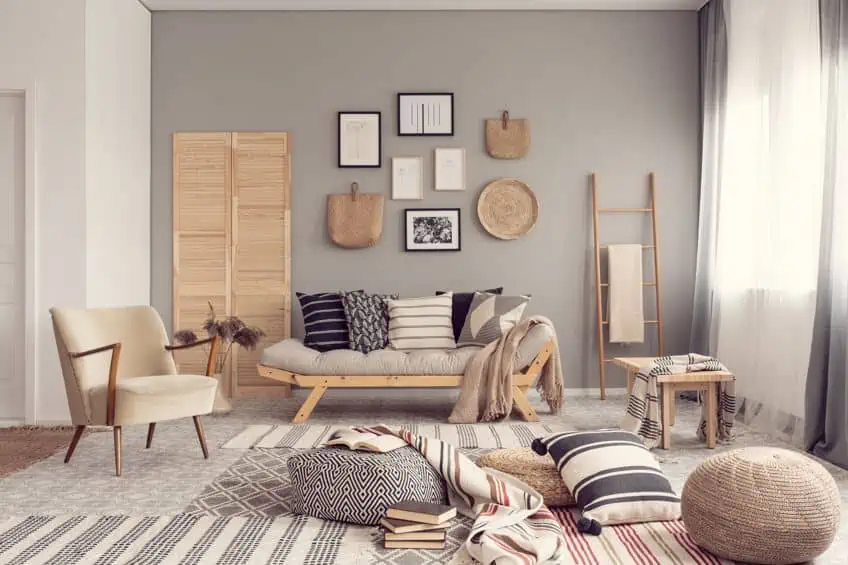
Centering Earth Tones
Earth tones are easy to use in your space and effortlessly complement many other colors. You can mix multiple earth tones in one room or use a few throughout your house to create a flow between your rooms and an overall cohesive feel. Earth tones may already be found in your home as a stone splashback, wooden floors, and furnishings, metallic accents, or even the terracotta pot your favorite plant sits in. The rich but muted earth tones found in earth-tone color schemes are the perfect complement to any plants in your home, or faux plants if you do not have much of a green thumb. Warm terracotta hues or deep navy blues are especially great for making their green leaves pop, which is why they are some of the most popular earth colors for interiors.
Pastels also pair beautifully with darker earth tones if you prefer a softer, more modern look that is still visually interesting.
Earth tones are versatile and can be used in any room. Dark earth tones are best used in bright rooms as otherwise they can be overwhelming and can make smaller rooms feel like dark caves. Warm earth tones are also great for bigger rooms and create an energizing atmosphere that encourages conversation, which makes them ideal for spaces that are frequented a lot such as kitchens or living rooms. Smaller rooms, or rooms that do not receive much sunlight, can benefit from bright and cool earth tones. These give a calm and soothing air to these rooms and make them feel larger, which makes them perfect for bathrooms, offices, or bedrooms.
Using Earth Tones as Accents
Taupe or beige rooms with gray undertones are great neural options if you are looking for something understated and easy to balance, however, you could also opt for a statement wall in sage green or amber. If you prefer not to paint a whole room or love switching up your style often, you can still enjoy earth tones in your home without the commitment. If you own a gray or beige couch adding pillows, throws, and even baskets in your favorite bold earth colors are great ways to incorporate them into your space while still leaving you the freedom to easily change them up.
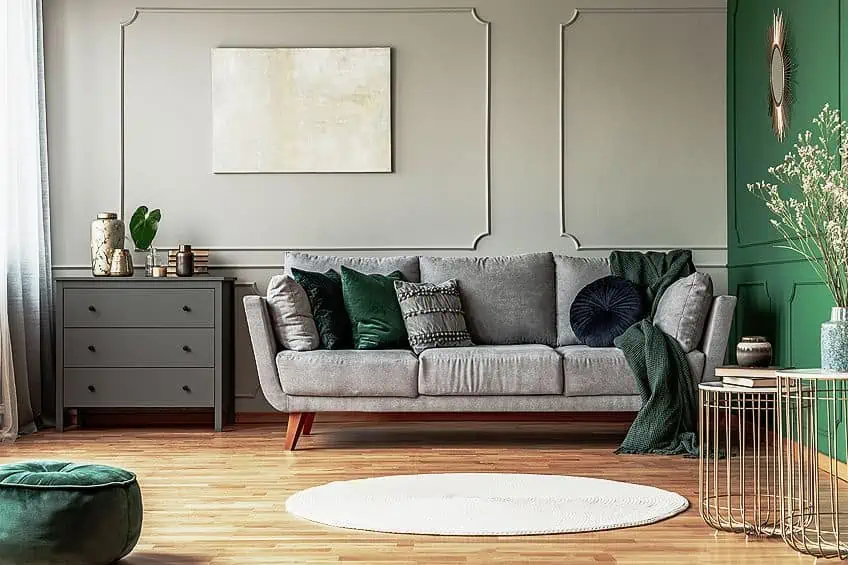
You can tie your room together using artwork or rugs which include both your earth tones and accent colors, however, do not forget to add texture to your rooms to create visual interest, especially if you are using a more monochrome color palette. You can do this by incorporating different fabrics, knits, tassels, or even pieces of nature itself with branches, dried flowers, or glassware. Highlighting existing features of your home such as stonework or exposed beams is another great way of bringing earth colors into your home.
Using Metals With Earth-Tone Palettes
Warm metallic colors such as copper, gold, and bronze are excellent to use with earth tones. The metallic fixtures throughout your home, such as your bathroom faucet or picture frames, can be used to subtly accent your earth tones while also creating cohesion across your rooms. Curtains, rugs, or pillows can also contain some metallic colors to add life to dark earth tones or rooms.
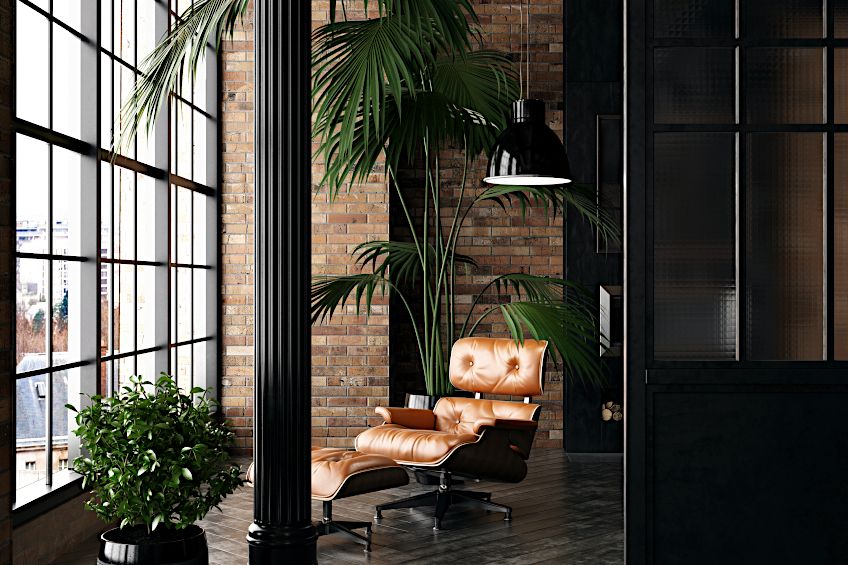
Nature never goes out of style, and this makes earth-tone color schemes timeless. It is important to remember that the temperature, lighting, and surroundings or your earth tones can all influence the final look so be sure to test out any colors using swatches before committing to them. If you are interested in using earth tones in your home but are not sure where to start, have a look at some of our color palettes to inspire you
Earth tones palettes are highly versatile and easy to use throughout your home no matter your style. They can be both bold and energizing with stunning contrast or understated, sophisticated, and subtle. The large selection of warm, cool, deep, and light colors may seem overwhelming but understanding how to use them can enable you to create your own timeless color schemes to use and enjoy for years to come.
Frequently Asked Questions
What Are Earth Colors?
Earth tones are traditionally thought to only include various shades of brown and beige, however, it also refers to colors that are often seen in nature. These colors include different blues, greens, yellows, oranges, and purples, and many of these earth-tone colors also contain brown undertones.
Are Earth Tones Warm or Cool Colors?
Earth tones are generally considered to be warm colors, however, there are also many earth tones that are cool colors, such as different blues and greens. The overall color temperature of your earth tone is largely dependent on the colors that were used to make it as well as how warm or cool it appears relative to any other colors that are used alongside it.
How to Create an Earth-Tone Color Scheme?
There are many different approaches to creating any color scheme with some of the most popular including complementary, monochromatic, and triadic color schemes. No matter which one you prefer it is important to choose one main earth color as the dominant color in your color scheme, two to three other colors as accent colors or to create contrast, and one or two neutral colors to balance all the other colors. The accent colors you choose will depend on the type of approach you chose to use for your color scheme.
Megan is a writer and researcher who graduated from the University of Cape Town with a degree in Social Sciences, specializing in Psychology and Environmental Science. Her passion for knowledge and leaving a positive impact has fueled her current work in conscious and sustainable growth in Southern Africa. Megan’s love of nature has also led her to train as an animal behaviorist. She works part-time training and rehabilitating dogs. Megan is interested in the physical and psychological effects of colors in our environment on our mood and well-being. In addition, she is concerned with how art and creativity have been an integral part of human society. Megan van Schoor has been writing blog posts on the topics of painting, drawing, and color theory for acrylgiessen since 2021.
Learn more about Megan van Schoor and about us.
